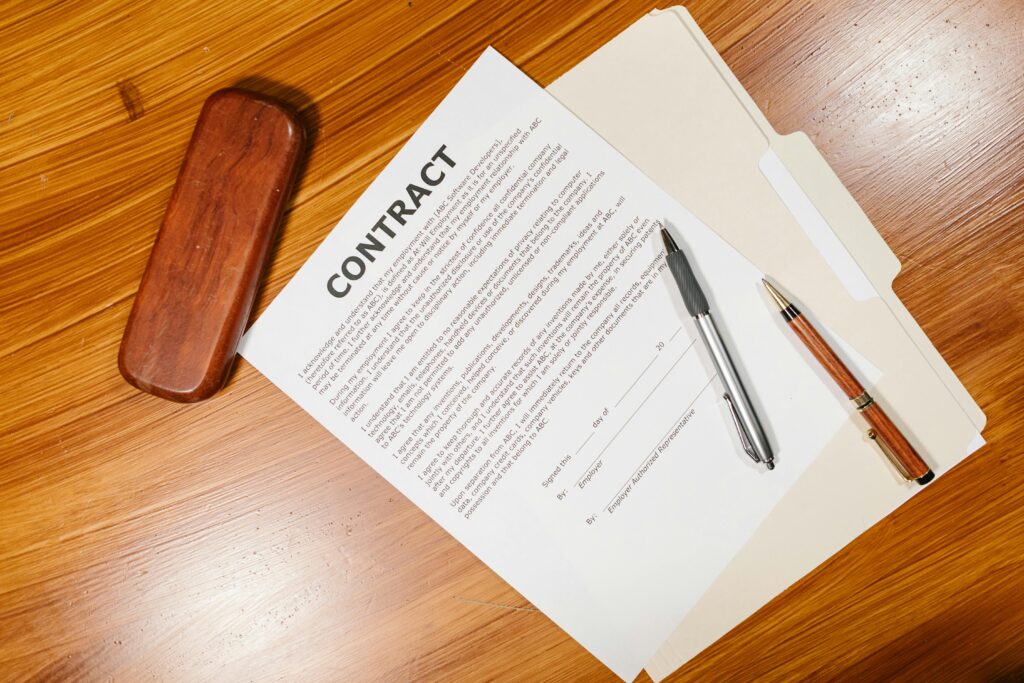Let’s get right to it. If you’ve built something unique—like a smart way to onboard users, a special system for matching buyers and sellers, or a clever method for speeding up deliveries—you’re probably asking: Can I protect this? Can I stop others from copying the way my business works?
What is a Business Process Anyway?
It’s Not Just Operations. It’s the Secret Behind Growth.
When people hear “business process,” they often think of something boring. A checklist. A back-office routine.
Something that lives in a spreadsheet or a dusty ops document.
But for startups, a business process is often where the magic happens.
It’s not just how your team works. It’s how your product delivers value.
It’s the sequence of steps, decisions, logic, and tools that take raw inputs—like data, user actions, or content—and turn them into something your customer wants.
And if you’ve built a better, faster, or smarter way to do that, you’ve built a competitive edge.
This process could be deeply technical. Or it could be a smart mix of automation, software, and people. Either way, it’s a system you’ve designed to win.
That system is protectable—if you treat it like an invention, not just a workflow.
Processes Can Be as Valuable as Products
Founders often focus on their product: what it looks like, what it does, how users interact with it.
That’s important. But in many cases, it’s the underlying process that makes the product valuable.
Think about a startup that uses machine learning to recommend the best insurance plan. The product is the app.
But the real IP is in the process—the data it collects, how it interprets that data, how the decision-making flow works behind the scenes, and how the final recommendation is presented.
That process is what separates them from everyone else. And that’s the part competitors will want to copy.
By shifting your mindset from “this is how we operate” to “this is what we invented,” you can start to see your process as a core asset—not just a function.
Action Step: Start Mapping What You’ve Built
If you’re not sure whether your business process is unique, try this: explain it out loud, step by step. Record yourself. Then listen back.
Chances are, you’ll hear something that makes your process different. A step no one else uses.
A data point others ignore. A decision flow that took you months to get right.
Write that down.
Now ask: did we invent this sequence? Did we solve a problem in a new way? Did we automate something others do manually?
Did we get to a result faster or more accurately than our competitors?
If the answer is yes to any of those, you’re looking at a process that might be protectable.
Why Process Protection Gives You Leverage
Protecting a business process is not just about stopping copycats. It’s about giving your business more options.
When you protect a process, you can license it. You can spin it out into new products. You can sell it. You can use it as leverage in deals, partnerships, or exits.
Even more, you can operate with confidence—knowing your process is a real asset, not just a trick others can steal.
Startups often underestimate how much value sits in their internal logic.
If your team has figured out a better way to onboard users, match supply and demand, automate manual steps, or drive repeat use—you’ve built something worth claiming.
You don’t need to wait for scale. You need to act before exposure.
Processes Make You Harder to Replace
In every industry, startups win when they can’t easily be copied. That’s not just about brand or speed. It’s about how they work.
Your business process, once protected, makes you harder to replace. A competitor might build a similar interface.
But they won’t be able to match your engine if it’s protected by IP.
This is especially important in markets where customer switching costs are low.
If your process gives better results faster, and no one else can replicate that experience, you’ve created real stickiness.
And that stickiness becomes part of your moat.
The best part? You don’t need to reveal everything.
A patent lets you disclose just enough to secure protection—while keeping the fine-tuned details within your team.
PowerPatent helps you do exactly that—transforming what you’ve built into a defensible patent application, while keeping your speed and focus intact.
Why Business Processes Feel Hard to Protect
The Myth of “You Can’t Patent That”
You might have heard someone say, “You can’t patent a business process.” That’s not totally true. What they mean is: you can’t protect just an idea.
You can’t patent something vague like “a better way to sell online” or “a system for managing freelancers.” That’s too broad.
But if your business process is tied to software, data, or technology—if it does something new, useful, and specific—then yes, it might be protectable.
The key is to show how it works in detail.
Still, most founders never try. Why? Because the rules are confusing, the process feels slow, and old-school patent firms make everything feel like a black box.
So people give up. Or worse, they wait until a competitor pops up doing the same thing.
That’s a mistake. Because by the time that happens, it’s usually too late.
What You’re Really Protecting
Here’s the simple truth. You’re not protecting a broad “idea” like “automating marketing.” You’re protecting the technical implementation of your idea.
You’re protecting the way your code works, how your system flows, and the way your process turns inputs into results.
Think of it like this: two restaurants can both serve pizza. But if one builds a special oven that cooks it twice as fast without burning it, that oven design can be protected.
Same with your business process. If you’ve built a better engine—even if others are in the same space—you can often protect your version.
The goal is to capture what’s unique about how your system works, not just what it does.
Where Most Startups Get It Wrong
Too often, founders focus on branding, pitching, or even fundraising before they think about protecting what makes their startup valuable.
They launch fast, ship features, and share everything on demo day—without locking in the pieces that matter.
Then they see copycats. Maybe it’s a bigger player. Maybe it’s a fast follower. Either way, they realize they gave away their edge before protecting it.
And by then, their process is public. It’s out in the open. Anyone can use it.
The smart move? Protect first. Share later.
That doesn’t mean you need to slow down or spend months in legal limbo.
With the right tools, you can move fast and still lock in your invention. That’s where platforms like PowerPatent come in.
It’s built for speed—helping you turn working code and processes into strong patent filings, backed by real attorneys, without slowing you down.
Real Talk: Not Every Process Should Be Patented
Let’s be honest. Some business processes just aren’t worth patenting. If it’s simple, easy to copy, or likely to change in a month, skip it. Not everything needs IP protection.
But if your process is core to your startup—if it drives growth, gives you a moat, or solves a hard problem in a new way—it’s worth a closer look.
That’s especially true if you’ve invested time, tech, or talent into building it.
Think of a patent like a lock on your competitive edge. You don’t need a lock on every drawer. Just the ones with real value inside.
How Patents Work for Business Processes
The Core Ingredients
If you want to protect a business process, the law looks for three things: it has to be new, useful, and not obvious.
That means it can’t be something already out there. It has to actually do something. And it can’t be something anyone in your field could easily think of.
Sounds simple, right? But here’s where it gets real: how you explain it matters more than anything.
Let’s say you’ve built a tool that matches users with experts based on real-time behavior. That’s not just a business idea.
That’s a technical system. If you can show how it works—step by step, with the logic and data behind it—you can often protect it.
But if you only talk about the high-level idea—like “connecting users to experts faster”—that’s not enough.
You have to go deeper. Think like an engineer, not a marketer. The more technical and specific, the better.
And no, you don’t need to write it in legal language. You just need to explain how it works, clearly and fully.
That’s what smart software + human attorneys (like the team at PowerPatent) help you do. They take your working code or flow, extract what’s unique, and turn it into a real patent filing—fast.
What Happens After You File
Once your patent is filed, you get something powerful: patent-pending status. That means your idea is officially locked in and you can publicly say it’s protected.
Even better, you don’t have to wait years to use it. Patent-pending gives you leverage right away.
You can use it in pitches. You can show investors you’ve got real IP. You can keep competitors from copying you without consequences.
The full patent might take a while to issue. But that “pending” status? It’s a big win. It says: we thought of this first, and we filed it.
And if someone else tries to copy you? You’ve got the paper trail to prove it.
What If You Change the Process Later?
Startups evolve. Processes change. That’s normal. The good news? Patents don’t have to cover everything forever.
You can file updates. You can file related patents. You can protect the core now, and layer on more later.
What matters most is capturing the first version while it’s still fresh—and before someone else sees it.
Think of it like a snapshot of your edge in time. You can always expand it as you grow.
This is another place founders get stuck. They wait until everything’s “final” or “perfect.” But in startup world, there’s no such thing.

The trick is to protect the parts that are working now—especially if they’re already live or being shown to others.
Once it’s out in the world, the clock starts ticking. In some countries, you lose the right to patent if you wait too long after launch. That’s why moving fast matters.
PowerPatent helps you do that. You don’t need to stop building. You just need to capture what’s new, get it on file, and keep moving.
It’s fast, simple, and backed by real experts.
What Kinds of Business Processes Can Be Protected?
Tech-Driven, Data-Powered, or Engineered Processes
The best candidates for protection are business processes that involve real technology under the hood.
If your process relies on code, algorithms, or unique ways of using data, you’re in great shape.
Maybe you’ve created a workflow that automatically adjusts pricing based on user behavior. Maybe your system routes tasks differently depending on customer urgency.
Maybe you’ve got a method that trains machine learning models using real-time feedback loops.
These aren’t just business strategies. They’re technical solutions. And that’s the key.
The law protects inventions, not ideas. But when your idea is turned into code that does something new? That’s an invention.
And if your invention gives you speed, accuracy, or a better customer experience—it’s not just useful. It’s valuable. That’s what makes it worth protecting.
Internal vs. External Processes
Some business processes run behind the scenes. Others are visible to users. Both can be protected if they meet the right criteria.
Internal processes might be things like smart automation tools, unique onboarding funnels, fraud detection workflows, or data pipelines that clean and process information in a clever way.
External processes might be personalized content delivery, adaptive interfaces, or multi-step checkout systems that respond to user intent in real time.
It doesn’t matter if the user sees it or not. What matters is that your system does something new, specific, and useful.
If it does—and you can explain it—then it’s worth exploring IP protection.
PowerPatent helps you capture both. It can turn a backend script or a customer-facing flow into a strong patent filing.
And it does that by asking the right questions, reviewing your code, and pulling out the gold—quickly.
The Role of Timing and First-Mover Advantage
Timing is everything. Once your business process is public—shared in a pitch, demoed at a meetup, or live on your app—you start losing the ability to protect it.
That’s why the smart move is to file early. Even if you’re still tweaking things. Even if you think you might improve it later.
Filing early locks in your version of the idea.
And here’s the kicker: being first matters. A patent isn’t about being perfect. It’s about being first with something new.
If you wait and someone else files before you, even if they saw it from you, they could block you from protecting your own work.
That’s why you don’t wait. You file fast. You capture your edge. Then you keep building.
And with PowerPatent, you can file in days, not months. No long back-and-forth. No vague questions. Just clear steps, real help, and a smooth process.
What If You’re Not Sure It’s Worth It?
Here’s a simple rule: if your business process saves time, saves money, boosts conversions, or keeps users engaged—and if you built it from scratch—it’s probably worth protecting.
Think about it. If that process gives you even a small edge, that edge is at risk the moment others see it.

You can’t stop them from copying it unless you’ve got IP.
So instead of guessing, get a second opinion. PowerPatent makes that easy.
Share your process, describe how it works, and let the system + attorneys help you figure out if it’s patent-worthy. No pressure, no confusion.
Better safe than sorry. Especially when your edge is on the line.
What Happens If You Don’t Protect Your Business Process?
The Invisible Risk Most Founders Miss
Let’s say you launch your startup. You’re getting traction. Your business process is helping you grow.
But you don’t file any patents. You’re too busy. Or you figure it’s not a priority yet.
Fast forward a few months. A bigger company sees what you’re doing. Or maybe a sharp competitor watches how your app behaves.
They reverse-engineer it. And just like that, your clever process—the one that took you months to build—is now theirs too.
And they don’t just copy it. They scale it faster. Market it louder. And maybe even raise more money off the back of it.
You lose your edge. And worse? You can’t stop them.
Because without a patent, you don’t own the process. You just used it first. But in the world of IP, that’s not enough.
Ownership comes from filing. That’s the rule.
Now imagine the opposite. You file first. They try to copy. But now, they’re the ones at risk. You’ve got leverage. You’ve got protection. You’ve got proof.
That’s the power of acting early.
How Investors See It
Smart investors don’t just bet on products. They bet on defensibility. They want to know: what’s stopping others from doing the same thing?
If you say, “We move fast,” that’s good. If you say, “We have IP on the core engine behind this,” that’s better.
Even if the patent is still pending, it shows you’re serious. It shows you’re building something real.
It gives them confidence that what you’ve built can’t just be cloned overnight.
In early-stage fundraising, confidence matters. And IP helps give it.
With PowerPatent, founders can show IP progress even in the early days.
It’s fast enough to file before demo day, investor meetings, or product launches—so you’re never pitching empty-handed.
When Legal Issues Come Into Play
It doesn’t happen often. But when it does, it’s messy.
Let’s say someone accuses you of copying their process.
If you’ve filed your own patent, you have evidence you created your version independently. That helps.
But if you didn’t file—and they did? Now you’re on the defensive. You might have to prove you built it first, which is hard.

You might have to change your product, delay your launch, or even fight a lawsuit.
That’s a nightmare no founder wants.
The truth is, most startups never face this. But those who do always wish they filed sooner. It’s like insurance for your invention.
You hope you never need it. But if you do, you’ll be glad it’s there.
PowerPatent makes it easy to protect yourself before those risks become real.
The Real Cost of Waiting
Founders worry about spending money on patents. That’s fair.
But here’s the bigger cost: losing your invention, your edge, or your shot because you didn’t protect it in time.
One missed filing can mean someone else patents your idea. One delay can mean your process goes public and becomes unprotectable.
One fast follower can steal your momentum.
Compared to that, filing early is cheap.
PowerPatent is built to make that early move fast, simple, and affordable. You don’t need to pay a law firm tens of thousands.
You just need to act while the process is still yours.
How to Turn Your Business Process Into a Defensible Asset
Step One: Write Down Exactly How It Works
Start with what’s real. Not the idea. Not the pitch. The actual steps your process follows.
What triggers it? What happens next? What inputs does it use? What decisions does it make? What results come out on the other side?
It doesn’t need to sound fancy. Just be clear. Pretend you’re explaining it to a smart friend who knows nothing about your company.
If you can walk through how your system works using code snippets, workflows, or even sketches, you’re on the right track.
This isn’t about buzzwords. It’s about structure. If you’ve got code, flowcharts, or diagrams—even better.
The goal is to capture the logic behind the process. The “how” is what makes it patentable.
PowerPatent’s software helps guide this step. It prompts you with the right questions and helps organize your thoughts the way patent attorneys—and the patent office—need to see them.
Step Two: Make Sure It’s Actually New
This part sounds hard, but it’s not. You don’t need to do a deep legal search. Just do your homework.
Look at what others in your space are doing. If no one else is solving the problem the way you are, you’re probably onto something new.
The key isn’t whether others have your idea. The key is whether anyone has built your version of that idea.
Let’s say you run a hiring platform. Lots of companies do that.
But if your process uses real-time video data to auto-match candidates to teams based on speaking style or collaboration behavior—that’s a new method. That can be protected.
PowerPatent does a fast, smart check as part of its process to make sure your approach is novel. And if it’s not? It helps you refine the story so that it is.
Step Three: File Fast
Once you know your process is valuable and new, don’t sit on it. File now. Even a provisional patent gives you a solid stake in the ground. It says: this is ours.
A provisional patent protects your filing date while giving you 12 months to update and expand it.

That’s gold for startups. It buys you time to build, refine, and raise money—without losing protection.
And best of all? Filing provisionally doesn’t need to be hard. With PowerPatent, you don’t need to spend weeks emailing a law firm or filling out forms.
You answer questions, upload files, and let the system + human experts handle the rest.
You’ll have a patent-pending application that actually captures how your process works—and you’ll be protected from day one.
Step Four: Keep Building, Keep Protecting
Your business process will evolve. That’s a good thing.
As you build more features or improve the engine, you can file more patents. These are called “continuations” or “updates.” You’re basically adding layers of protection as you grow.
Each one makes your IP stronger. Each one makes your moat wider.
And the best part? Filing more doesn’t mean starting from scratch.
PowerPatent stores your original filing, helps track improvements, and makes it easy to add to your IP portfolio as you scale.
That’s how startups build real defensibility—step by step, without breaking the flow.
How Founders Can Think About Business Process Patents Strategically
Your Process Is Your Engine
Think of your startup like a race car. Your product is the body. Your team is the driver. But your process?
That’s the engine. It’s what makes the whole thing go.
If you’ve built a process that runs faster, smoother, or more efficiently than your competitors—it’s your edge. And smart founders don’t leave their engine unprotected.
The trick is to stop thinking of your business process as just “something that helps us grow.”
Start seeing it as part of the product. Something worth investing in. Something you can actually own.
Because if your engine gets copied, your speed goes with it.
Patents Make Your Story Stronger
Fundraising is hard. Storytelling matters. When you can point to a business process you invented—and show that it’s protected—it adds real weight to your pitch.
You’re not just another company “doing X.” You’re the team that figured out a better way to do X—and locked it in.
That’s powerful. It turns your technical depth into investor confidence. And it sets you apart in a sea of lookalike decks.
Best of all, patent-pending status is real IP you can talk about right now. It shows you’ve thought ahead. It shows you’re building to last.
PowerPatent helps you tell that story. Not just by filing, but by framing it in a way that makes sense to investors.
They’ll see your process as a moat, not just a method.
Competitive Advantage You Can Show, Not Just Say
Lots of founders say they have a moat. But very few can prove it.
A patent is proof.
It says: we’re not just building something good—we’re building something others can’t easily copy. And that changes how you negotiate, partner, and grow.
Say a big company wants to partner or acquire you. Your patents become leverage.
Say a competitor starts looking a little too similar. Your patents give you options.
Even in the best-case scenario—no conflict, no drama—having strong IP makes you a more valuable, more fundable, and more defensible business.
And that’s exactly what every founder wants.
You Don’t Need to Know How Patents Work to Get Started
Here’s the thing: you’re not supposed to be a patent expert. You’re supposed to be building a product, growing a company, and solving hard problems.
The old way of doing patents made you feel like you had to be a lawyer. Long meetings. Confusing language. Slow turnarounds.
PowerPatent flips that.
It meets you where you are. You speak in founder terms—code, product, workflows—and it translates your invention into a clean, complete patent filing.

You focus on building. It handles the legal layer.
It’s fast. It’s clear. And it’s backed by real attorneys who’ve seen it all.
So no, you don’t need to “figure out patents” before you start. You just need to start. PowerPatent will guide you the rest of the way.
Wrapping It Up
If you’ve built a better way of doing something—don’t let it slip through your fingers.
Because here’s the truth most founders miss: the moment your business process becomes public, it’s fair game. Competitors can watch. Investors can share. And bigger players can move faster.

Leave a Reply